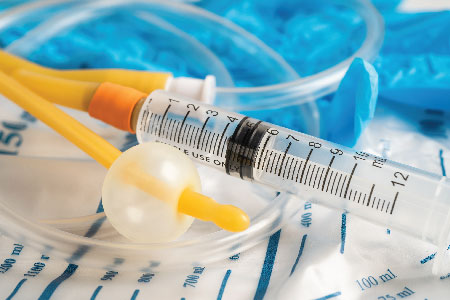
Urinary Catheters for Females? Management of Incontinence is NOT a long-term solution.
Management of incontinence using urinary catheters is a short-term solution, but this is what you can do.
Bladder Botox (botulinum toxin) injections have been used as a treatment option for overactive bladder (OAB) or neurogenic bladder. The procedure involves injecting Botox into the bladder muscle, which temporarily paralyzes the muscle and reduces bladder contractions.
This can lead to increased bladder capacity and a decrease in urgency and frequency of urination, thus alleviating symptoms of incontinence!
The effects of Botox injections typically last several months, and the treatment may need to be repeated periodically to maintain its benefits. However, it’s essential to weigh the potential benefits against the risks and side effects associated with bladder Botox injections.
During the procedure, Botox is injected directly into the bladder muscle using a cystoscope. A cystoscope is a thin, flexible tube with a camera that allows the doctor to see inside the bladder and administer the injections precisely.
Botox works by blocking the release of a neurotransmitter called acetylcholine. Acetylcholine is responsible for transmitting signals from nerves to muscles, including the bladder muscle. By inhibiting acetylcholine release, Botox interferes with the nerve impulses that cause the bladder to contract involuntarily and excessively.
With the reduced release of acetylcholine and the temporary paralysis of the bladder muscle, the muscle relaxes, allowing the bladder to hold more urine without experiencing the frequent, urgent contractions associated with an overactive bladder.
The effects of bladder Botox injections typically start to take effect within a few days to a week after the procedure and may last for several months. As the effects wear off, the overactive bladder symptoms may return, and the treatment will need to be repeated to maintain its benefits. In a study of two-year costs, Botox therapy was $7500.
It’s essential to consider that Botox injections for overactive bladder are generally used when other treatments, such as lifestyle changes or medications, have not provided sufficient relief or have caused intolerable side effects. Like any medical procedure, Botox injections for overactive bladder carry potential risks and side effects, which should be discussed thoroughly with a healthcare professional before undergoing the treatment.
As a new alternative for overactive bladder, external Electrical Stimulation, also known as neuromodulation, is another treatment option. During this treatment, mild electrical pulses are delivered to the nerves that control the bladder’s function, typically through electrodes placed on the skin near the pelvic region.
Electrical stimulation can calm the nerves attached to the bladder muscles, reducing episodes of urinary incontinence. It can be used as a stand-alone therapy or in combination with other treatments, depending on the individual’s condition and severity of incontinence. It is very safe and convenient to use at-home. After, the initial 6-8 weeks of treatment, maintenance is on a periodic basis as needed, but costs are only the GelPad costs which are minimal. The first two-year cost is 500 USD, and roughly 50 USD per year afterward on average. A lot cheaper in the long run compared to Botox.
In summary, both botox injections and external electrical stimulation are types of treatment options for urinary incontinence, but the convenience, cost-efficiency, and safety are greater with Estim. ELITONE URGE is the ONLY FDA-clear treatment for external electrical stimulation for urge incontinence.